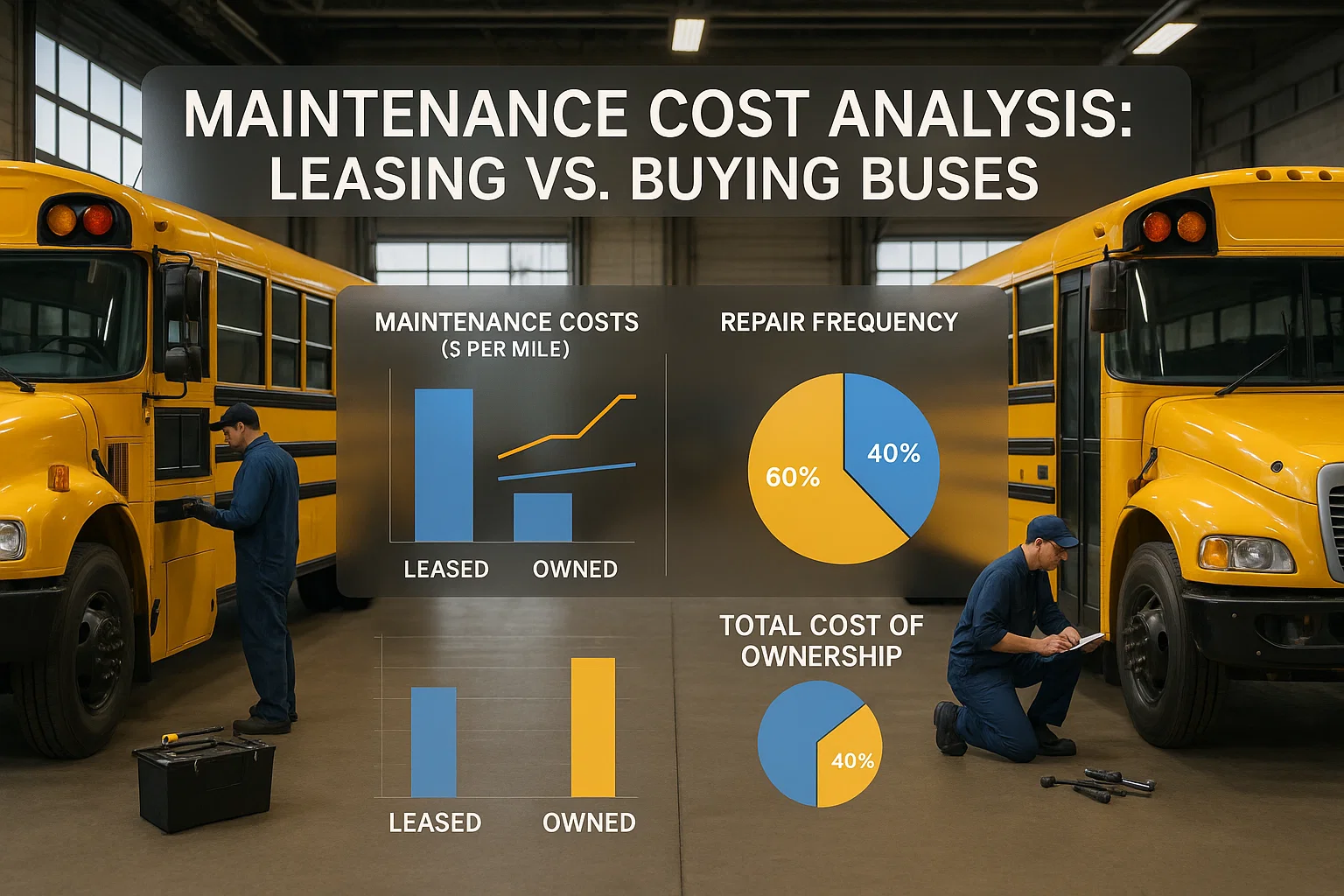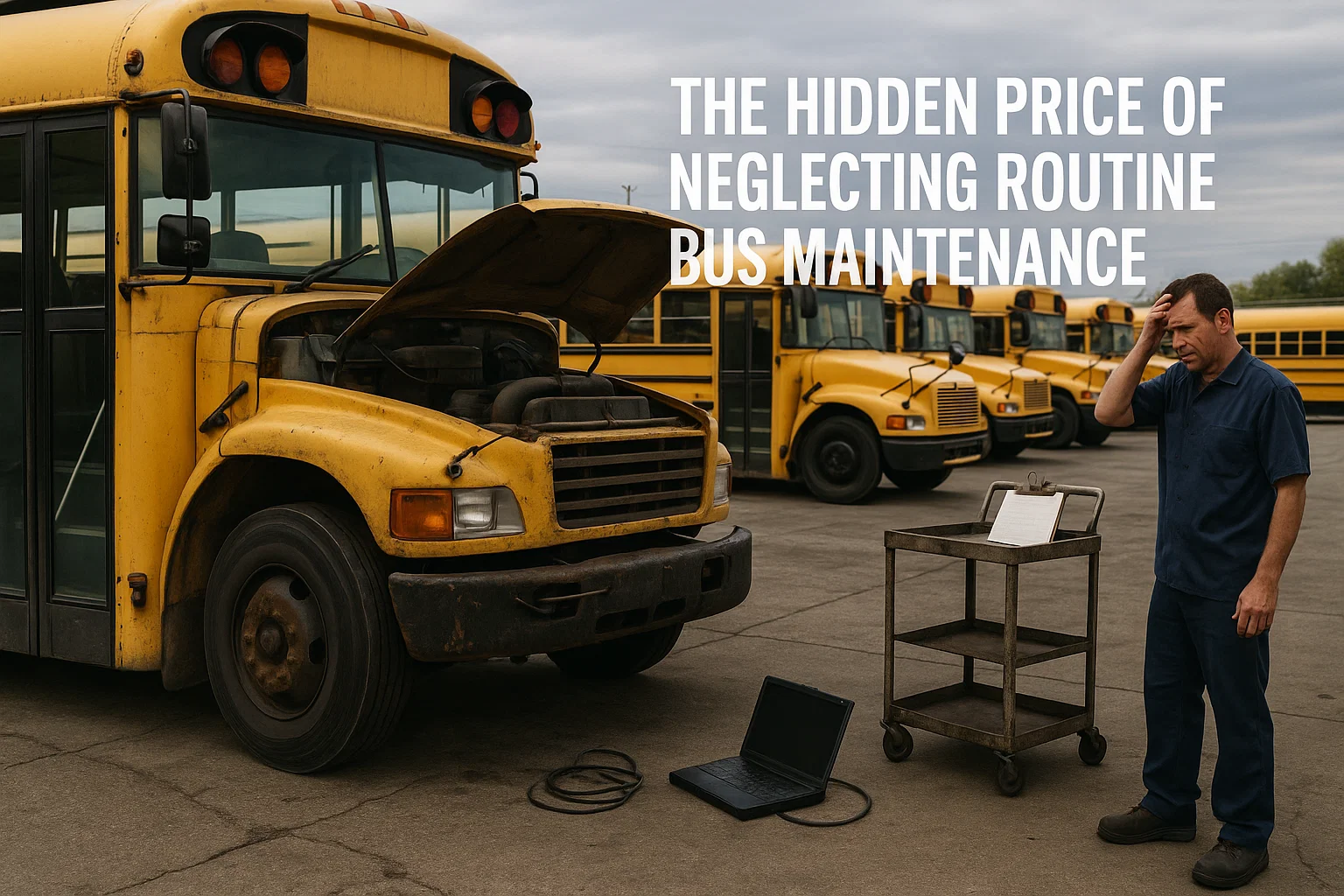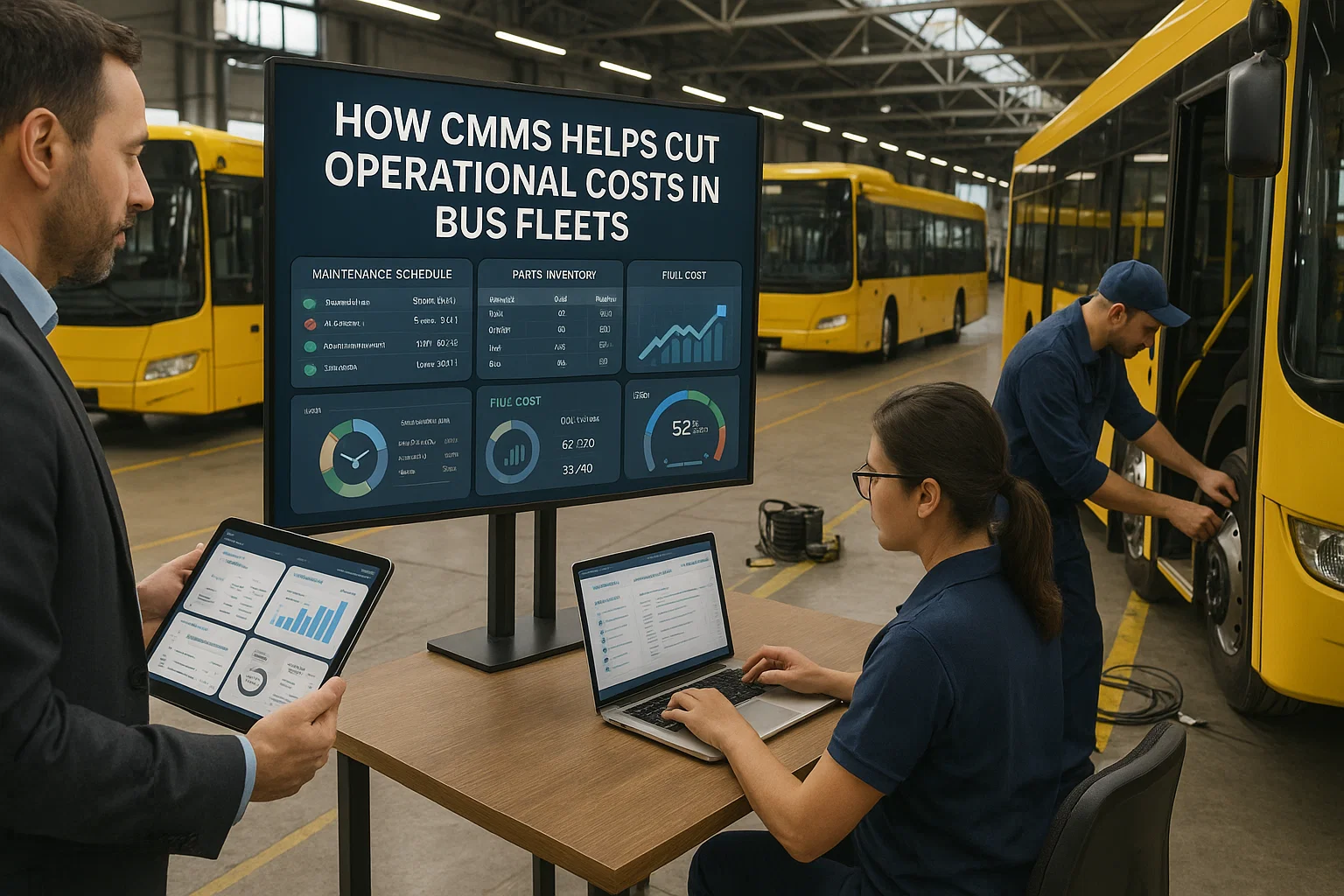Mobile technology has revolutionized bus maintenance operations across the United States, transforming how technicians diagnose problems, document repairs, and communicate with management systems. Modern mobile-first maintenance through Bus CMMS platforms increases technician productivity by 45%, reduces paperwork by 80%, and accelerates repair completion times by 35%.
The shift from clipboard-based inspections to smartphone-enabled diagnostics represents more than technological advancement—it's a fundamental reimagining of maintenance workflows. Fleet operators report that mobile technology adoption through Bus CMMS systems delivers ROI within 90 days through improved efficiency, reduced errors, and enhanced communication.
As maintenance complexity increases with advanced vehicle technologies, mobile solutions provide technicians with instant access to repair manuals, diagnostic codes, and expert support. This digital transformation empowers field technicians to resolve issues faster while maintaining comprehensive documentation for compliance and analysis.
Mobilize Your Maintenance Operations
Transform your fleet maintenance with cutting-edge mobile technology solutions.
Getting StartedBook a Demo
The Mobile Revolution in Fleet Maintenance
Mobile technology fundamentally changes how maintenance teams interact with vehicles, systems, and information. Bus CMMS mobile applications provide comprehensive functionality that extends far beyond simple work order management, creating connected ecosystems where information flows seamlessly between field and office.
Core Mobile Capabilities
Modern mobile maintenance applications enable technicians to perform complete diagnostic scans using smartphone-connected OBD devices. These advanced diagnostic tools interpret error codes, suggest repair procedures, and order required parts—all from a device that fits in a pocket. Real-time synchronization ensures that all stakeholders have immediate visibility into repair progress and vehicle status.
Voice-to-text capabilities allow technicians to dictate detailed repair notes while working, eliminating the need to stop and write. Photo and video documentation captures visual evidence of damage, repairs, and completed work, creating comprehensive records that support warranty claims and quality assurance. Augmented reality features overlay repair instructions directly onto live camera views, guiding technicians through complex procedures.
Implementation Impact
- Productivity Increase: Mobile-equipped technicians complete 45% more work orders per day
- Error Reduction: Digital data capture eliminates 90% of transcription errors
- Communication Speed: Real-time updates reduce information lag from hours to seconds
- Training Efficiency: Mobile access to repair guides accelerates skill development by 60%
- Compliance Accuracy: Automated documentation ensures 100% regulatory compliance
Transforming Field Service Operations
Mobile-Enabled Field Capabilities
- Remote Diagnostics: Connect to vehicle systems via Bluetooth for instant troubleshooting
- Parts Identification: Use camera-based recognition to identify and order components
- GPS Integration: Track technician location and optimize service routing automatically
- Offline Functionality: Continue working without internet connectivity with automatic sync when reconnected
- Multi-Language Support: Accommodate diverse workforce with localized interfaces
Field service operations benefit dramatically from mobile technology integration with Bus CMMS platforms. Technicians responding to roadside breakdowns access complete vehicle histories, identify required parts, and receive remote assistance through video calls with senior mechanics. This comprehensive support reduces average breakdown resolution time by 40% while improving first-time fix rates.
Emergency Response Enhancement
Mobile technology transforms emergency breakdown response from reactive scrambling to coordinated efficiency. Dispatchers track technician locations in real-time, automatically routing the nearest qualified mechanic to stranded vehicles. Mobile apps provide turn-by-turn navigation, estimated arrival times, and pre-arrival diagnostic data that enables technicians to bring correct parts on the first trip.
Digital Workflow Automation
Mobile platforms within Bus CMMS systems automate entire maintenance workflows from initial inspection through final quality checks. This workflow automation eliminates manual handoffs, reduces processing delays, and ensures consistent procedure adherence across all maintenance operations.
Automated Process Flows
Inspection Automation
Digital checklists guide inspectors through standardized procedures with automatic flagging of issues
Work Order Generation
Identified problems automatically create prioritized work orders with required parts lists
Quality Verification
Multi-stage approval workflows ensure repair quality before vehicles return to service
Real-Time Collaboration
Mobile technology enables unprecedented collaboration between maintenance team members. Technicians share live video feeds for remote diagnostics, supervisors review and approve work in real-time, and parts managers receive automatic requisitions based on repair requirements. This connected approach reduces communication delays by 75% while improving team coordination.
Integration with manufacturer databases provides instant access to technical service bulletins, recall notices, and updated repair procedures. Bus CMMS mobile apps automatically check for relevant updates based on vehicle identification, ensuring technicians always work with current information.
Upgrade to Mobile-First Maintenance
Join leading fleets using mobile technology to revolutionize maintenance efficiency.
Getting StartedBook a Demo
Mobile-Powered Data Analytics
Mobile devices serve as powerful data collection tools that feed analytics engines within Bus CMMS platforms. Every interaction, measurement, and observation captured through mobile apps contributes to comprehensive datasets that drive predictive maintenance and operational optimization.
Analytics Capabilities
- Performance Tracking: Monitor technician productivity and identify training opportunities
- Repair Time Analysis: Measure actual versus estimated repair times for better planning
- Parts Usage Patterns: Track component consumption to optimize inventory
- Quality Metrics: Analyze comeback rates and first-time fix percentages
- Cost Analysis: Calculate real-time repair costs including labor, parts, and downtime
Machine learning algorithms analyze mobile-collected data to identify patterns and predict future maintenance needs. This predictive capability transforms maintenance from reactive to proactive, reducing unexpected breakdowns by 65% while optimizing maintenance scheduling for minimal service disruption.
Integration with Vehicle Systems
Modern mobile applications seamlessly integrate with vehicle telematics and diagnostic systems, creating unified maintenance platforms. Bus CMMS mobile solutions connect directly to vehicle CANbus networks through Bluetooth adapters, enabling comprehensive diagnostics from smartphones or tablets.
Connected Vehicle Features
Real-time engine parameter monitoring allows technicians to observe live data streams while troubleshooting problems. Mobile apps display engine temperatures, pressures, and performance metrics in intuitive dashboards that highlight anomalies. This immediate access to vehicle data reduces diagnostic time by 50% while improving accuracy.
Predictive diagnostics leverage historical data and current readings to forecast component failures before they occur. Smart algorithms analyze trends in sensor data, identifying subtle changes that indicate developing problems. Technicians receive proactive alerts on their mobile devices, enabling preventive repairs that avoid costly breakdowns.
IoT Sensor Integration
Internet of Things (IoT) sensors throughout vehicles continuously transmit data to mobile applications. Tire pressure monitors, brake wear sensors, and fluid level indicators provide constant visibility into vehicle condition. This comprehensive monitoring enables condition-based maintenance that optimizes component life while preventing premature failures.
Security and Compliance Management
Mobile Security Features
- Encrypted Communications: Military-grade encryption protects sensitive maintenance data
- Biometric Authentication: Fingerprint and facial recognition ensure authorized access only
- Role-Based Permissions: Granular access controls limit functionality based on user roles
- Audit Trails: Complete tracking of all mobile app activities for compliance verification
- Remote Wipe Capabilities: Lost or stolen devices can be remotely cleared of sensitive data
Mobile technology within Bus CMMS platforms incorporates comprehensive security measures that protect sensitive fleet data while ensuring regulatory compliance. Multi-factor authentication, encrypted data transmission, and secure cloud storage create robust security frameworks that exceed industry standards.
Training and Adoption Strategies
Successful mobile technology implementation requires comprehensive training programs that ensure all maintenance staff can leverage Bus CMMS mobile capabilities effectively. Leading fleet operators invest in structured training that transforms skeptical technicians into mobile technology champions.
Training Program Components
Hands-On Workshops
Interactive sessions where technicians practice using mobile apps on actual vehicles
Video Tutorials
On-demand training videos accessible through mobile devices for just-in-time learning
Peer Mentoring
Experienced users guide colleagues through mobile technology adoption
Change Management
Overcoming resistance to mobile technology requires demonstrating clear benefits to technicians. Successful implementations highlight how mobile tools make jobs easier, reduce paperwork burden, and provide valuable support for complex repairs. Gamification elements like productivity leaderboards and achievement badges encourage adoption while making work more engaging.
Experience Mobile Maintenance Excellence
See how mobile technology can transform your fleet operations today.
Getting StartedBook a Demo
Future of Mobile Maintenance Technology
The evolution of mobile technology continues to expand possibilities for bus maintenance operations. Bus CMMS platforms are incorporating emerging technologies like 5G connectivity, augmented reality, and artificial intelligence to create even more powerful mobile maintenance solutions.
Emerging Mobile Technologies
- 5G Connectivity: Ultra-fast data speeds enable real-time video diagnostics and instant large file transfers
- AR Maintenance Guides: Overlay repair instructions directly onto live camera views for guided repairs
- AI Voice Assistants: Natural language interfaces allow hands-free interaction with CMMS systems
- Wearable Integration: Smartwatches and AR glasses provide hands-free access to maintenance information
- Predictive Analytics: Mobile apps leverage AI to predict failures and suggest preventive actions
These advancing technologies promise to further revolutionize maintenance operations, making technicians more productive, repairs more accurate, and fleet management more efficient. Early adopters of these next-generation mobile tools will gain significant competitive advantages in operational efficiency and service quality.
Frequently Asked Questions
What ROI can fleets expect from mobile CMMS technology implementation?
Fleet operators implementing mobile technology through Bus CMMS platforms typically achieve ROI within 90-120 days. The 45% productivity increase translates to completing more repairs with existing staff, saving $75,000-150,000 annually in labor costs for a 100-bus fleet. Mobile technology reduces paperwork processing by 80%, saving 2-3 administrative hours daily. The 35% reduction in repair time means vehicles return to service faster, generating additional revenue. Combined with 90% fewer documentation errors reducing warranty claim rejections, most fleets see total savings of $200,000-400,000 annually. The mobile transformation also improves technician satisfaction and retention, reducing recruitment and training costs.
How does Bus CMMS mobile technology differ from generic maintenance apps?
Bus CMMS mobile applications are specifically designed for transit operations, incorporating features that generic apps lack. The platform includes pre-configured inspection checklists for DOT compliance, integration with bus-specific diagnostic protocols, and specialized workflows for ADA equipment maintenance. Unlike generic solutions, Bus CMMS mobile apps understand route schedules, passenger safety requirements, and FTA reporting needs. The system includes transit-specific features like farebox maintenance tracking, destination sign diagnostics, and passenger counting system integration. This specialization results in 50% faster adoption and 40% better efficiency compared to adapting generic maintenance apps for transit use.
Conclusion
Mobile technology has fundamentally transformed bus maintenance operations, creating unprecedented opportunities for efficiency, accuracy, and cost reduction. Bus CMMS mobile platforms empower technicians with powerful tools that streamline workflows, enhance communication, and enable data-driven maintenance strategies.
The documented benefits—45% productivity increase, 80% paperwork reduction, and 35% faster repairs—demonstrate the transformative power of mobile maintenance technology. These improvements translate directly to competitive advantages through reduced costs, improved service reliability, and enhanced regulatory compliance.
Success in mobile technology adoption requires more than app deployment; it demands comprehensive training, change management, and continuous optimization. Fleet operators who fully embrace mobile-first maintenance through advanced CMMS platforms position themselves at the forefront of the maintenance revolution, ready to capitalize on emerging technologies and evolving industry demands.
Ready to Go Mobile?
Transform your maintenance operations with Bus CMMS mobile technology.








